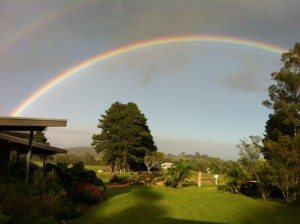
You might be aware that I live in a little community of three couples on five acres in the country. When we located to this rural setting after having lived for decades in the city, we met our new neighbours and joined a choir, a book club and other groups.
I felt that I had to let our new acquaintances know very gently that my living situation was unusual, to say the least, at my age and stage in life: six people living under one roof. When people heard of our arrangement, they were mostly politely surprised but it did take further talking to explain how we ended up in shared housing, and also how we’ve benefited from doing it.
Other societies on the planet have a much more established tradition of communal living than we do in the West. And, they also have a way of looking at the passages of life that gives support for all ages and stages.
For instance, in India in the traditional view of yoga, a practitioner is meant to vary the practices he does according to his stage of life, and these are spelled out clearly with a particular structure called Ashrama.
These are the four Hindu stages:
- The first stage includes any youth or students from ages 8 to 25 years. This describes a young person as he’s growing up and assimilating knowledge and values. The youth might start yoga practice at an early age and do energetic and mainly physical practices, with just a small emphasis on pranayama and meditation.
- Next is the householder stage from ages 25 to 50 years, when the focus is on marriage, family, vocation, and civic responsibilities. In this busy time of life, the yoga practitioner would balance physical and reflective practices equally.
- Then there’s the retirement stage around middle age and later. It’s when one’s children are grown, and perhaps have their own children. The demands of work may have decreased or stopped so at last the retiree finally has time to be more introspective. There’s more freedom to reflect on what lies beyond the mundane life. Rather than emphasising physical practice, there’s a tendency to be quieter in one’s practices, doing pranayama, meditation, and perhaps studying ‘wisdom literature’.
- Lastly, there’s the renunciate stage that is usually associated with old age . You may have heard of Sadhus or a Sannyasins, those who give up family attachments so they can withdraw from society. The Indian forest or cave dweller is the stereotype of this individual. And, in our society, individuals might choose to do long and mostly silent retreats.
Why divide up one’s life in this way? Because it allows for the gradual development of a rich inner life and a movement away from the worldly towards a more spiritual existence.
Instead of ending up at the finish of life and wondering ‘Is this all there is?’ or ‘What was that all about?’, one has the necessary tools to face what might be the most challenging stage of life – and even embrace it.
At our stage of life, in our tiny community, we are definitely not withdrawing from society. Each one of us is full of verve and a commitment to serving others as well as taking care of ourselves with best health practices – some of which are yoga, pranayama and meditation.
If you’d like a peek at our amazing lifestyle on Mitchells Island, check out Shedders.

0 Comments